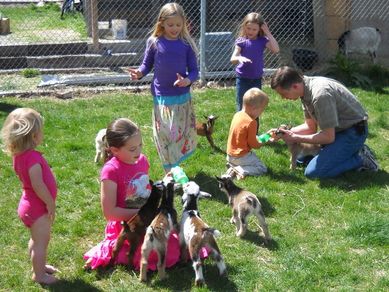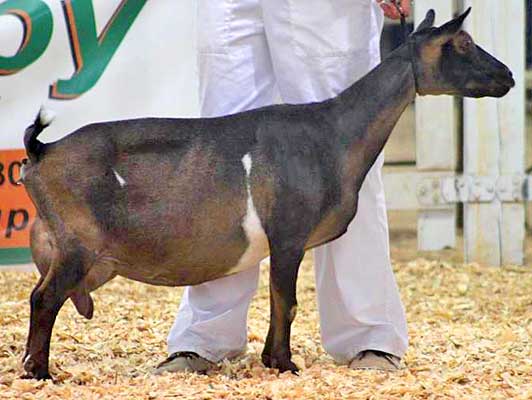I'll admit that the first time I heard that goats were selling for $300-500, I was shocked. And $1000 for a goat was just unbelievable. I always thought a buck kid was $25 and a nice doe kid was $150, even with a pedigree. I have since learned just what you can get for that kind of money. You get what you pay for.
Goats have to have babies about every year or two in order to keep producing milk. So, if you want to have a milk goat, you will be producing lots of goat kids. Quality kids are easier to sell than low-quality goats.
Goats have to have babies about every year or two in order to keep producing milk. So, if you want to have a milk goat, you will be producing lots of goat kids. Quality kids are easier to sell than low-quality goats.
Health:
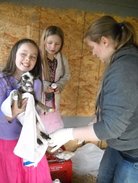
The first reason you should pay a little more for your goat is health. There are 3 major diseases that can greatly affect the length and quality of life of your goat, and we can test for them. CAE (caprine arthritis encephalitis), Johne’s (paratuberculosis), and CL (caseous lymphadenitis) are the big three. CAE causes swollen, painful joints. Johne’s causes diarrhea and emaciation. CL is characterized by swollen abscesses. Many times a kid is born looking healthy and sold to a good home where they are loved, only to have the new owners find out it has a incurable disease. Once a goat has any of these diseases, it has them for life, and that life is often shortened or miserable.
In order to test for these, a breeder draws a blood sample from each goat and sends it to a laboratory. Once every animal in a herd is tested negative, that herd is considered “clean.” As long as no new animals are brought in, or only animals from other clean herds, then there is no way for the offspring to get those diseases. If those animals attend a show, they should be retested. Most responsible breeders test once a year and should be able to provide lab results to prospective buyers.
Blood testing costs money. I don’t have to pay a veterinarian to draw blood (since my husband is one), but I do pay about $25 per goat, plus a $10 fee every time I submit samples, plus $10 shipping. That adds up quickly.
Vaccinations are another health issue. CD&T is a vaccine that protects against clostridium types C and D and tetanus. It is your first protection, especially in young kids, against enterotoxemia. Enterotoxemia typically causes a goat to have diarrhea and go off their feed, and, when left untreated, it often dies within 12 hours. Tetanus is also dangerous, especially when kids get disbudded or wethered (neutered.) If you recognize tetanus early enough, sometimes the animal can be saved, but usually tetanus is fatal because it happens quickly and results in the whole animal becoming stiff. Vaccinations need to happen at certain ages to be effective. We vaccinate at 5 weeks, 8-9 weeks, and 12 weeks.
Disbudding is another major health concern. Many people think that disbudding is inhumane; however, horned goats are dangerous to people and to each other. Even a friendly goat will swing its head around, which could gouge your eye out, injure udders, or hurt smaller goats. Horns also get caught in fencing and brush which could cause the death of the animal. Disbudding needs to be done at 7-10 days of age. It is done by placing a hot iron on the horn buds, killing them before they start growing. (Because my husband is a veterinarian, we are able to sedate the babies and use nerve blocks. They have less pain, and we are able to get a safer burn because their kids aren't flailing around.)
By the time a goat is a couple months old, horns have to be removed by an intensive surgery called “de-horning,” where you basically cut off the top of the goat’s head and wait for it to heal over several months. As much as I hate disbudding baby goats, it is much more humane than de-horning!
There are many other health reasons to buy from a reputable breeder. Do they supplement their goats with minerals, like copper and selenium? Some areas are so deficient in these minerals that the goats will grow deformed. (I thought my area was not deficient, but I had a kid that was put down for other reasons examined to see what his mineral levels were. This cost me extra money, but I found that he was deficient in copper and so I now supplement my whole herd with copper. If I had not paid for the examination, I would have never known they were copper deficient. I have since seen their coats become sleek and shiny.) Minerals are a huge part of keeping a dairy doe in good production and getting her kids started right!
Does the owner deworm or test for parasites? It's best to have a stool sample examined before you treat with dewormer and to switch dewormers occasionally to make sure you don't have resistant worms. Coccidia are another type of internal "bugs." They are different from worms, and all goats have some. However, baby goats are prone to getting too many before their immune systems learn to control them, especially during warm months or if kept in dirty conditions. Diarrhea and going off feed are two common signs of too many coccidia. You need to act quickly if you suspect this. There are products on the market that can be given as preventative and/or treatment.
All these things cost money, but they result in much healthier animals.
In order to test for these, a breeder draws a blood sample from each goat and sends it to a laboratory. Once every animal in a herd is tested negative, that herd is considered “clean.” As long as no new animals are brought in, or only animals from other clean herds, then there is no way for the offspring to get those diseases. If those animals attend a show, they should be retested. Most responsible breeders test once a year and should be able to provide lab results to prospective buyers.
Blood testing costs money. I don’t have to pay a veterinarian to draw blood (since my husband is one), but I do pay about $25 per goat, plus a $10 fee every time I submit samples, plus $10 shipping. That adds up quickly.
Vaccinations are another health issue. CD&T is a vaccine that protects against clostridium types C and D and tetanus. It is your first protection, especially in young kids, against enterotoxemia. Enterotoxemia typically causes a goat to have diarrhea and go off their feed, and, when left untreated, it often dies within 12 hours. Tetanus is also dangerous, especially when kids get disbudded or wethered (neutered.) If you recognize tetanus early enough, sometimes the animal can be saved, but usually tetanus is fatal because it happens quickly and results in the whole animal becoming stiff. Vaccinations need to happen at certain ages to be effective. We vaccinate at 5 weeks, 8-9 weeks, and 12 weeks.
Disbudding is another major health concern. Many people think that disbudding is inhumane; however, horned goats are dangerous to people and to each other. Even a friendly goat will swing its head around, which could gouge your eye out, injure udders, or hurt smaller goats. Horns also get caught in fencing and brush which could cause the death of the animal. Disbudding needs to be done at 7-10 days of age. It is done by placing a hot iron on the horn buds, killing them before they start growing. (Because my husband is a veterinarian, we are able to sedate the babies and use nerve blocks. They have less pain, and we are able to get a safer burn because their kids aren't flailing around.)
By the time a goat is a couple months old, horns have to be removed by an intensive surgery called “de-horning,” where you basically cut off the top of the goat’s head and wait for it to heal over several months. As much as I hate disbudding baby goats, it is much more humane than de-horning!
There are many other health reasons to buy from a reputable breeder. Do they supplement their goats with minerals, like copper and selenium? Some areas are so deficient in these minerals that the goats will grow deformed. (I thought my area was not deficient, but I had a kid that was put down for other reasons examined to see what his mineral levels were. This cost me extra money, but I found that he was deficient in copper and so I now supplement my whole herd with copper. If I had not paid for the examination, I would have never known they were copper deficient. I have since seen their coats become sleek and shiny.) Minerals are a huge part of keeping a dairy doe in good production and getting her kids started right!
Does the owner deworm or test for parasites? It's best to have a stool sample examined before you treat with dewormer and to switch dewormers occasionally to make sure you don't have resistant worms. Coccidia are another type of internal "bugs." They are different from worms, and all goats have some. However, baby goats are prone to getting too many before their immune systems learn to control them, especially during warm months or if kept in dirty conditions. Diarrhea and going off feed are two common signs of too many coccidia. You need to act quickly if you suspect this. There are products on the market that can be given as preventative and/or treatment.
All these things cost money, but they result in much healthier animals.
ADGA Performance Pedigrees:
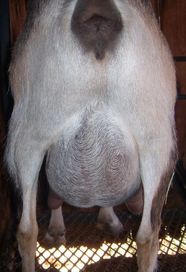 How much milk?
How much milk?
ADGA stands for American Dairy Goat Association. It is different from AGS or MDGA. It is not just a pedigree for purebred animals. You can make cute babies every year that are “registered” and not have what ADGA is providing. If you go to ADGAgenetics.org, you can look up a pedigree on any animal and then go backwards and forwards, seeing all their relatives. That’s kind of cool. However, ADGA is actually providing a “performance pedigree” if people will use it. That takes serious work. ADGA registration costs $8-14 (depending on gender) per goat. I also have to pay $20 per year for membership.
1. Milk Test (DHIR)
How much milk a goat makes is genetic, based on how much their parents’ ancestors milked. Milk test is when an owner measures by weight how much milk a goat made in 2 milkings over 24 hours (babies must be separated during that time.) The owner (or a contracted tester) sends that record along with a milk sample to a lab. The lab tests the milk for protein, butterfat, and somatic cell count (this indicates if the goat has mastitis.) Then the lab sends its results as well as the milk record to ADGA who adds it to the online pedigree of that goat. An owner can do this only once, or the best record is one where there is a milk sample every month over the whole course of the lactation, about 305 days.
The reason that milk test is important, especially in Nigerian Dwarfs, is that they don’t make a ton of milk. Fantastic milkers (I mean top ten in the nation) milk 4-5 lbs. per day. That’s about a half gallon per day or 4 cups per milking, milking twice. Most goats make much more milk in the first few weeks after having babies; we call this “peak production.” After that, milk production slowly drops. First time milkers also do not give half as much milk as 5th year milkers. Many Nigerians, who are not bred for milk, only give 2 cups of milk per milking for most of the year, even if you milk twice a day (that's 2 lbs/day). For my family that is not enough milk to justify the work of milking them, not to mention the grain they eat. So you can see why it is important to select superior milk production genetics.
On the other hand, some small families don't need a super milker. If you have 2 does and they each give 2 lbs. a day, that's 4 gallons a week.
Another reason for milk test is accuracy. Most owners don’t know exactly how much milk their goat is making. I mean who weighs and records the amount after each milking, for each goat? I’ve heard things like, this goat “was” making a half gallon a day. Or my goat always gives a quart per milking. Always? Then you find out that the goat is only being milked once a day. Foam on a bucket of milk can also make it look almost twice as full. Taking a careful record once a month over the course of the lactation shows whether a goat continues to produce well months after her babies are weaned.
Results for protein and butterfat are especially useful for people wanting to make cheese and soap. Nigerian Dwarf milk produces more cheese or soap with less waste than standard-size goat milk because it is so high in components.
ADGA gives awards to high-producing does, or to bucks with high-producing offspring. The number in front of a star (*) indicates how many generations of does have been on milk test and milked enough to qualify for a star. (They only have to milk about 600 lbs to qualify for a star. 1000-1500 lbs in 305 days is a good milk record.) They also try to rank by percentile which does are currently making the most milk. You can also compete for breed leader status (ADGA ranks the top 10 highest producers in the nation for each year.) Superior Genetics (SG) combines a good milk record with a good linear appraisal score. Elite looks at records from many relatives. A buyer can see not only how much milk the mother is making, but records for several generations of relatives, some on the other side of the country.
We breed for milk production first. Our goats have several generations of heavy milk production behind them.
For more information on how to read a performance pedigree: https://adga.org/wp-content/uploads/2015/07/READING-an-ADGA-PERFORMANCE-PEDIGREE.pdf
However, milk test has costs. I pay ADGA $45 per year to handle the paperwork. I pay the lab $25, plus $10 shipping, per test. With 8-10 tests per year, that adds up.
1. Milk Test (DHIR)
How much milk a goat makes is genetic, based on how much their parents’ ancestors milked. Milk test is when an owner measures by weight how much milk a goat made in 2 milkings over 24 hours (babies must be separated during that time.) The owner (or a contracted tester) sends that record along with a milk sample to a lab. The lab tests the milk for protein, butterfat, and somatic cell count (this indicates if the goat has mastitis.) Then the lab sends its results as well as the milk record to ADGA who adds it to the online pedigree of that goat. An owner can do this only once, or the best record is one where there is a milk sample every month over the whole course of the lactation, about 305 days.
The reason that milk test is important, especially in Nigerian Dwarfs, is that they don’t make a ton of milk. Fantastic milkers (I mean top ten in the nation) milk 4-5 lbs. per day. That’s about a half gallon per day or 4 cups per milking, milking twice. Most goats make much more milk in the first few weeks after having babies; we call this “peak production.” After that, milk production slowly drops. First time milkers also do not give half as much milk as 5th year milkers. Many Nigerians, who are not bred for milk, only give 2 cups of milk per milking for most of the year, even if you milk twice a day (that's 2 lbs/day). For my family that is not enough milk to justify the work of milking them, not to mention the grain they eat. So you can see why it is important to select superior milk production genetics.
On the other hand, some small families don't need a super milker. If you have 2 does and they each give 2 lbs. a day, that's 4 gallons a week.
Another reason for milk test is accuracy. Most owners don’t know exactly how much milk their goat is making. I mean who weighs and records the amount after each milking, for each goat? I’ve heard things like, this goat “was” making a half gallon a day. Or my goat always gives a quart per milking. Always? Then you find out that the goat is only being milked once a day. Foam on a bucket of milk can also make it look almost twice as full. Taking a careful record once a month over the course of the lactation shows whether a goat continues to produce well months after her babies are weaned.
Results for protein and butterfat are especially useful for people wanting to make cheese and soap. Nigerian Dwarf milk produces more cheese or soap with less waste than standard-size goat milk because it is so high in components.
ADGA gives awards to high-producing does, or to bucks with high-producing offspring. The number in front of a star (*) indicates how many generations of does have been on milk test and milked enough to qualify for a star. (They only have to milk about 600 lbs to qualify for a star. 1000-1500 lbs in 305 days is a good milk record.) They also try to rank by percentile which does are currently making the most milk. You can also compete for breed leader status (ADGA ranks the top 10 highest producers in the nation for each year.) Superior Genetics (SG) combines a good milk record with a good linear appraisal score. Elite looks at records from many relatives. A buyer can see not only how much milk the mother is making, but records for several generations of relatives, some on the other side of the country.
We breed for milk production first. Our goats have several generations of heavy milk production behind them.
For more information on how to read a performance pedigree: https://adga.org/wp-content/uploads/2015/07/READING-an-ADGA-PERFORMANCE-PEDIGREE.pdf
However, milk test has costs. I pay ADGA $45 per year to handle the paperwork. I pay the lab $25, plus $10 shipping, per test. With 8-10 tests per year, that adds up.
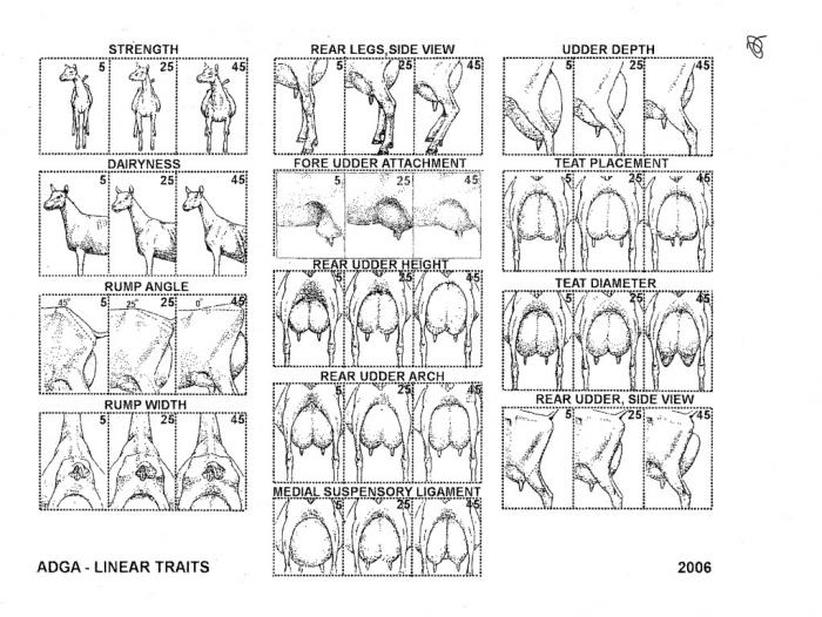
2. Linear Appraisal (LA)
Linear appraisal is when a judge comes to the owner’s property and evaluates each individual goat’s structure against the ideal goat. 13 primary traits are judged and given a score. A show is limited to local competition, but LA compares the individual to perfection. Appraisers travel the country appraising different herds. Their scores are put into the online database that is connected with that doe’s pedigree so that anyone can see it. You can compare family members or show goats on the other coast.
Some people think that LA is superficial. On the contrary, the goal of the LA program is to improve the breed’s health and milkability.
- A wider rump = kidding ease.
- Width and depth of chest = more room for internal organs, which should cause more feed to be turned into more milk and more kids.
- Several udder components are evaluated with the goal of high, tight, balanced udders that can hold lots of milk over the lifetime of the goat.
A loose, low udder is not only painful, but unsanitary and prone to injury.
Once a breeder knows the faults of the goats in her herd, she can start breeding to better animals. If all the does have narrow rumps, a breeder can research other herds who are on linear appraisal and select a buckling with wide-rumped relatives.
I know one breeder who saw that two half-sisters, who had the same father, both got coded for low thurls (that's the hip-joint). She decided not to use that buck anymore since low-thurls can cause kidding difficulties. Later, a third half-sister died with her kids because her thurls were too narrow and low to deliver her kids.
Costs for linear appraisal are $35 per year to ADGA plus $8.50 per goat, and that’s if you have enough animals to get an appraisal or if you transport your animals to a “host herd” who does have that many animals. Most breeders also shave their animals so they are in the best condition.
For more information on linear appraisal: https://adga.org/wp-content/uploads/2019/02/LABOOKLETALL_19.pdf
Linear appraisal is when a judge comes to the owner’s property and evaluates each individual goat’s structure against the ideal goat. 13 primary traits are judged and given a score. A show is limited to local competition, but LA compares the individual to perfection. Appraisers travel the country appraising different herds. Their scores are put into the online database that is connected with that doe’s pedigree so that anyone can see it. You can compare family members or show goats on the other coast.
Some people think that LA is superficial. On the contrary, the goal of the LA program is to improve the breed’s health and milkability.
- A wider rump = kidding ease.
- Width and depth of chest = more room for internal organs, which should cause more feed to be turned into more milk and more kids.
- Several udder components are evaluated with the goal of high, tight, balanced udders that can hold lots of milk over the lifetime of the goat.
A loose, low udder is not only painful, but unsanitary and prone to injury.
Once a breeder knows the faults of the goats in her herd, she can start breeding to better animals. If all the does have narrow rumps, a breeder can research other herds who are on linear appraisal and select a buckling with wide-rumped relatives.
I know one breeder who saw that two half-sisters, who had the same father, both got coded for low thurls (that's the hip-joint). She decided not to use that buck anymore since low-thurls can cause kidding difficulties. Later, a third half-sister died with her kids because her thurls were too narrow and low to deliver her kids.
Costs for linear appraisal are $35 per year to ADGA plus $8.50 per goat, and that’s if you have enough animals to get an appraisal or if you transport your animals to a “host herd” who does have that many animals. Most breeders also shave their animals so they are in the best condition.
For more information on linear appraisal: https://adga.org/wp-content/uploads/2019/02/LABOOKLETALL_19.pdf
|
3. Show
While there are many kinds of shows, ADGA sanctioned shows require animals to have an ADGA registration. They also require a qualified ADGA judge and a certain number of goats from different herds competing against each other. The purpose is compare goats locally, or nationally, if you attend ADGA Nationals. The Nationals take a class of 30 high LA scoring does and pulls out the best structured animal. It is subjective to the judge’s opinion, but these are highly trained individuals. I was trying to pick a buck to improve our herd. I first looked at a buck out of a doe who was a top ten milker and had a LA of 90. His sister was also a top ten milker. These two does competed at ADGA Nationals, but they were both placed at the bottom of their classes. Another doe took National Reserve Champion. I noticed that she also had a LA score of 90 and high milk test days. When I found her buckling for sale, I could see that he had better structural genetics, even though both does had the same LA scores. Local shows are probably the least useful for determining genetics because they only compare animals based on what is available in that area. Our herd has only competed in local Utah shows, but some of our goats are from national show lines. There are numerous costs: registration fees, travel costs, and the labor of shaving, bathing, and hoof trimming. |
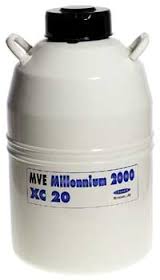
4. Line-breeding
Line-breeding is when you breed two individuals who have similar genetics. The reason this is useful is because it produces reliability. If you breed a tall goat and a short goat, you don’t get medium height goats. You get some tall and some short. This is especially true when breeding two different breeds. If you want to make more of what you already have, you line-breed. This only works if these animals actually have the genetics you want, which means you need high quality animals from proven breeding programs. The purchase price for such animals is usually not cheap. Line-breeding is only possible if you know the ancestry behind your animals, but it is only useful, if you know there are superior milk and structure genetics behind them.
Here's a useful article: "Linebreeding, inbreeding, what's the difference?" by Alice Hall
5. Artificial Insemination (AI)
Because breeders can identify superior genetics on the other side of the country, the cheapest way to import superior genetics into a herd, is through AI, if it is successful. Semen is collected from a buck, frozen in a straw, and stored in a nitrogen tank. It can then be shipped anywhere, thawed, and put into a doe who is ready to breed. This allows one proven buck (who is probably not for sale or for sale for $1500 plus shipping) to have many offspring, even after they have died. You can improve your herd’s genetics in just a generation or two if used correctly.
AI is not without cost. Semen collection is costly, about $50/buck to collect, then $4.50/straw with a minimum of 30 straws per buck, so total for one buck is about $200. But the greatest cost is probably shipping frozen straws, around $200 round trip. And purchasing semen straws from nice bucks is not cheap either (about $200 for 5 straws.) The semen must be stored in a nitrogen tank (purchase cost at least $500), which requires being re-filled periodically. However, the cost of the nitrogen is cheaper than feeding and housing a buck. Bucks also have to be DNA tested with the results on file with ADGA, so that you can prove your offspring are really related to that buck. Equipment to AI is also around $200. There is no guarantee that the doe will conceive.
We are currently in the process of trying AI. While we have all the equipment, we are still learning and have not yet achieved success. Hopefully, it is just around the corner.
Line-breeding is when you breed two individuals who have similar genetics. The reason this is useful is because it produces reliability. If you breed a tall goat and a short goat, you don’t get medium height goats. You get some tall and some short. This is especially true when breeding two different breeds. If you want to make more of what you already have, you line-breed. This only works if these animals actually have the genetics you want, which means you need high quality animals from proven breeding programs. The purchase price for such animals is usually not cheap. Line-breeding is only possible if you know the ancestry behind your animals, but it is only useful, if you know there are superior milk and structure genetics behind them.
Here's a useful article: "Linebreeding, inbreeding, what's the difference?" by Alice Hall
5. Artificial Insemination (AI)
Because breeders can identify superior genetics on the other side of the country, the cheapest way to import superior genetics into a herd, is through AI, if it is successful. Semen is collected from a buck, frozen in a straw, and stored in a nitrogen tank. It can then be shipped anywhere, thawed, and put into a doe who is ready to breed. This allows one proven buck (who is probably not for sale or for sale for $1500 plus shipping) to have many offspring, even after they have died. You can improve your herd’s genetics in just a generation or two if used correctly.
AI is not without cost. Semen collection is costly, about $50/buck to collect, then $4.50/straw with a minimum of 30 straws per buck, so total for one buck is about $200. But the greatest cost is probably shipping frozen straws, around $200 round trip. And purchasing semen straws from nice bucks is not cheap either (about $200 for 5 straws.) The semen must be stored in a nitrogen tank (purchase cost at least $500), which requires being re-filled periodically. However, the cost of the nitrogen is cheaper than feeding and housing a buck. Bucks also have to be DNA tested with the results on file with ADGA, so that you can prove your offspring are really related to that buck. Equipment to AI is also around $200. There is no guarantee that the doe will conceive.
We are currently in the process of trying AI. While we have all the equipment, we are still learning and have not yet achieved success. Hopefully, it is just around the corner.
So ADGA registration takes on a whole new meaning when you understand it’s not just a record of who the parents are.
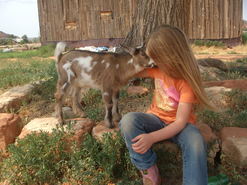
Quality Stock:
Not only are goats in my herd on milk test and linear appraisal, but their pedigrees are full of proven animals who were shown, milked, and appraised. When you first look at a pedigree, it just looks like a bunch of names, but when you go to ADGAgenetics.org or start looking online, you will see photos and records of what kind of goats they were. I was amazed at how far back I could go and still find proven animals. Starting with quality stock costs more than starting with poor quality animals.
Intensively Managed/Raised:
This basically means that our goats are our pets. We don’t have a lot of goats, so each one is carefully cared for. I like goats. I like milking them, and I like bottle feeding them. They follow me around and come when I call their names (if they want to.) Babies are bottle-fed partly because it’s fun and partly because it results in extremely friendly goats. I have to bottle-feed 2-4 times a day, sacrificing sleep when they are newborns. Of course our children provide lots of hands to help hold bottles. Our baby goats get lots of petting and enjoy chasing the human kids around the yard. They also get exposed to cats and dogs.
If you don't think this helps to produce friendly goats, go meet some pasture goats that have never been around people. They are wild, scared of people, and can be aggressive. Sometimes people are able to dam-raise babies if they still spend a lot of time socializing with their goats.
Our does are milked by hand (now we have a machine!) twice a day. This means they are trained to a milk stand for months before kidding. It also means that I breed for larger teats (especially important on Nigerians) with large openings. Milking twice a day is more work, but it results in more milk. They are also given grain, which is needed to stay healthy while making a lot of milk. Our goats get a lot of handling.
I carefully monitor breedings so I know exactly when a doe is due and who the father is. While she is labor, I will spend hours waiting and checking on her, so I can be on hand if she has any difficulties or if the babies need extra help.
Not only are goats in my herd on milk test and linear appraisal, but their pedigrees are full of proven animals who were shown, milked, and appraised. When you first look at a pedigree, it just looks like a bunch of names, but when you go to ADGAgenetics.org or start looking online, you will see photos and records of what kind of goats they were. I was amazed at how far back I could go and still find proven animals. Starting with quality stock costs more than starting with poor quality animals.
Intensively Managed/Raised:
This basically means that our goats are our pets. We don’t have a lot of goats, so each one is carefully cared for. I like goats. I like milking them, and I like bottle feeding them. They follow me around and come when I call their names (if they want to.) Babies are bottle-fed partly because it’s fun and partly because it results in extremely friendly goats. I have to bottle-feed 2-4 times a day, sacrificing sleep when they are newborns. Of course our children provide lots of hands to help hold bottles. Our baby goats get lots of petting and enjoy chasing the human kids around the yard. They also get exposed to cats and dogs.
If you don't think this helps to produce friendly goats, go meet some pasture goats that have never been around people. They are wild, scared of people, and can be aggressive. Sometimes people are able to dam-raise babies if they still spend a lot of time socializing with their goats.
Our does are milked by hand (now we have a machine!) twice a day. This means they are trained to a milk stand for months before kidding. It also means that I breed for larger teats (especially important on Nigerians) with large openings. Milking twice a day is more work, but it results in more milk. They are also given grain, which is needed to stay healthy while making a lot of milk. Our goats get a lot of handling.
I carefully monitor breedings so I know exactly when a doe is due and who the father is. While she is labor, I will spend hours waiting and checking on her, so I can be on hand if she has any difficulties or if the babies need extra help.
I have not included all the costs goat owners have, like quality feed, vet bills, fencing, the list never ends.
Why are we willing to pay hundreds of dollars for a crossbred puppy with no performance behind it, but not for a goat from whom we hope to get healthy babies and milk for years to come?
Why are we willing to pay hundreds of dollars for a crossbred puppy with no performance behind it, but not for a goat from whom we hope to get healthy babies and milk for years to come?
